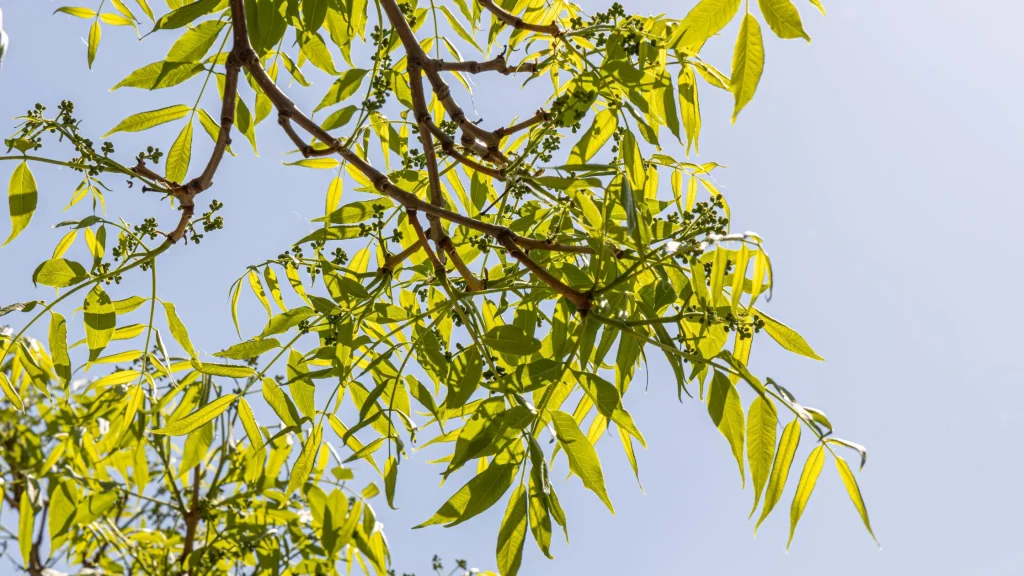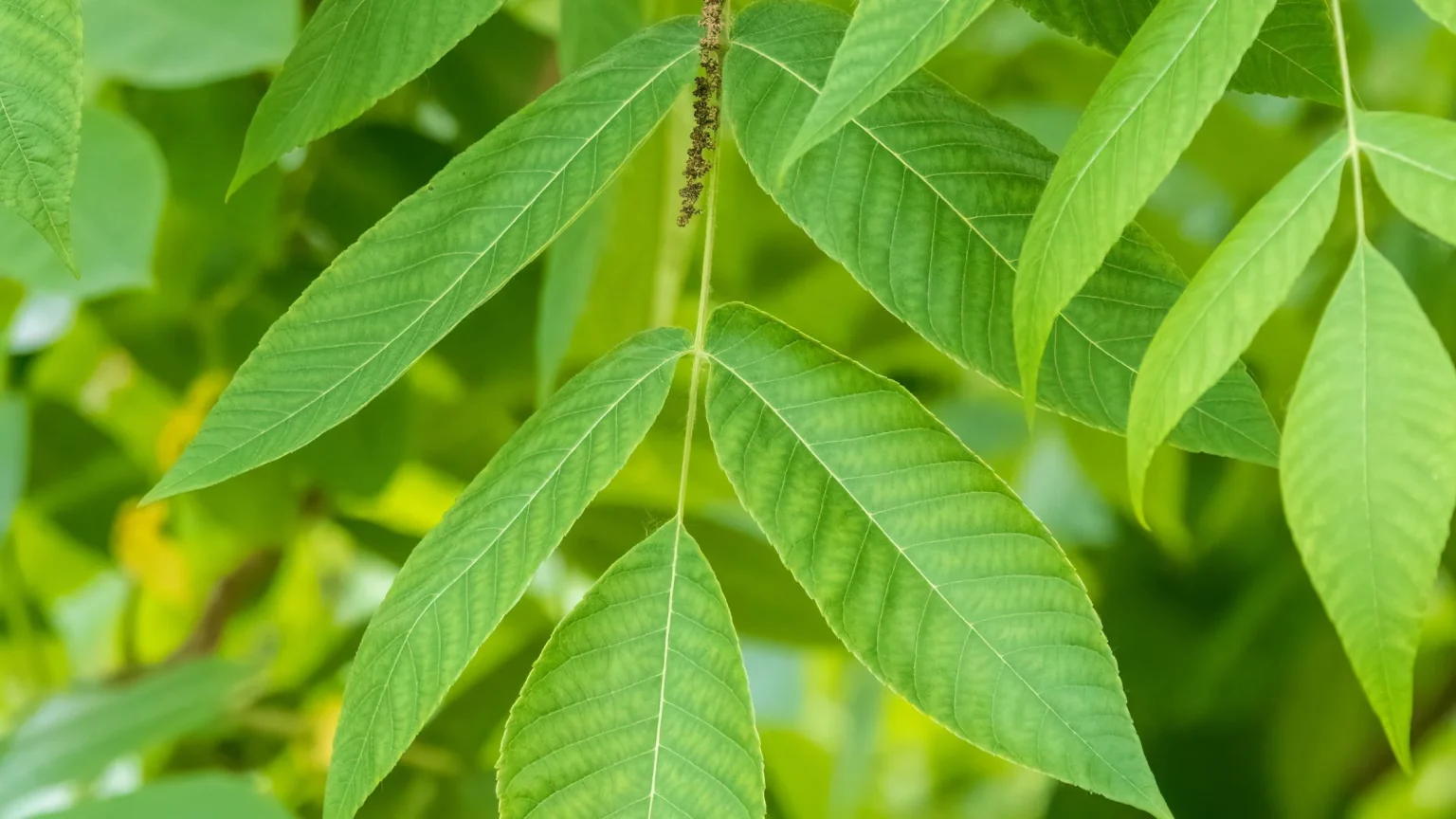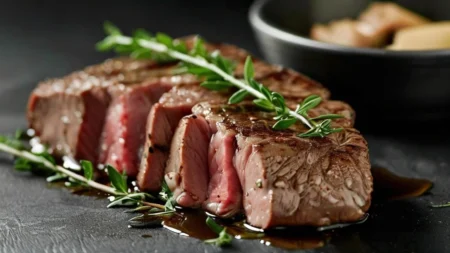The Amur Cork Bark, botanically known as Phellodendron Amurense, is a captivating deciduous tree native to Northeast Asia, including regions of Russia, China, Korea, and Japan. Belonging to the Rutaceae family, this tree is prized for its unique ornamental bark, drought tolerance, and vibrant fall foliage, making it an ideal choice for urban landscapes.

Key Takeaways
- The Amur Cork Bark (Phellodendron Amurense) is a distinctive deciduous tree native to Northeast Asia.
- It is valued for its unique ornamental bark, drought tolerance, and vibrant fall foliage.
- The tree belongs to the Rutaceae family and is well-suited for urban landscaping.
- Its versatile characteristics make it an excellent choice for creating visually appealing and sustainable outdoor spaces.
- Understanding the tree’s origins, features, and cultivation requirements is key to successful integration into landscape designs.
Introduction to the Amur Cork Bark Tree
The Amur Cork Bark tree, also commonly referred to as the Chinese Cork Tree, is a member of the Phellodendron genus within the Rutaceae family. It is native to regions of Northeast Asia, including Eastern Russia, Northeast China, Korea, and Japan. The tree is known for its unique ornamental bark, which is the primary reason for its widespread use in landscaping and urban settings.
Origins and Classification
The Amur Cork Bark (Phellodendron amurense) is a deciduous tree that belongs to the Rutaceae family, which includes other well-known plants such as citrus trees. As a member of the Phellodendron genus, the Amur Cork Bark is closely related to other cork tree species found in Asia. Its native range encompasses regions with a continental climate, where it thrives in the temperate, moisture-rich conditions.
Unique Characteristics
The Amur Cork Bark tree is prized for its distinctive ornamental bark, which is the primary feature that sets it apart from other deciduous trees. As the tree matures, its bark develops a thick, corky texture and a grayish-brown color, with deep vertical fissures creating a striking visual pattern. This unique bark not only adds aesthetic value to the tree but also contributes to its drought-tolerant and urban landscaping-friendly characteristics.
Amur Cork Bark (Phellodendron Amurense)
The Amur Cork Bark tree is known for its distinctive physical appearance, particularly its unique bark. The bark is thick and corky, with a grayish-brown color that develops deep, vertical fissures as the tree matures. This ornamental bark is the primary reason for the tree’s popularity in landscaping and urban settings.
Physical Appearance
The Amur Cork Bark, a member of the Rutaceae family and the Phellodendron genus, is a deciduous tree native to Northeast Asia, including regions of Russia, China, Korea, and Japan. Its distinct bark, which is thick and textured with deep vertical fissures, is a standout feature that sets it apart from other tree species. As the tree ages, the bark develops an increasingly rugged and visually striking appearance, making it a sought-after choice for urban landscaping and shade trees.
Growth Habits and Requirements
The Amur Cork Bark thrives in a variety of soil conditions, including clay or sandy soils, and is known for its drought-tolerance. This makes it an ideal choice for urban landscaping where resources may be limited. The tree prefers full sun to partial shade and can reach heights of up to 50 feet, providing ample shade and visual interest in the landscape. Additionally, the Amur Cork Bark often produces yellow flowers in the spring, further enhancing its ornamental appeal.
Ornamental Value of the Cork Bark Tree
The Amur Cork Bark tree is highly prized for its ornamental value, particularly its unique and striking bark patterns. As the deciduous tree matures, the thick, corky bark develops deep, vertical fissures, creating a distinctive and visually appealing texture. The gray-brown color of the bark contrasts beautifully with the tree’s green foliage, adding depth and visual interest to the urban landscaping and Asian plant species in the Phellodendron genus and Rutaceae family.
Striking Bark Patterns
The ornamental bark of the Amur Cork Bark tree is the primary reason for its popularity in shade tree and drought-tolerant applications. As the tree ages, the bark develops a captivating, textured appearance that adds visual intrigue and character to the landscape. This unique bark pattern makes the Amur Cork Bark a standout choice for urban landscaping and Asian plant species enthusiasts.
Fall Foliage Display
In addition to its striking bark, the Amur Cork Bark tree also boasts a vibrant fall foliage display. As the deciduous tree transitions through the seasons, its leaves transform into a stunning array of yellow flowers and golden hues, further enhancing its ornamental appeal. This seasonal color change adds an extra layer of visual interest and makes the Amur Cork Bark a valuable asset to any landscape or garden.
Landscaping with the Amur Cork Bark
The Amur Cork Bark’s combination of ornamental features and environmental adaptability make it an excellent choice for landscaping, particularly in urban settings. Its drought tolerance and ability to thrive in less-than-ideal soil conditions make it a suitable option for planting in cities and other developed areas with limited resources.
Urban Landscaping Suitability
The Amur Cork Bark tree is well-suited for urban landscaping due to its resilience and low maintenance requirements. Its ornamental bark and vibrant fall foliage make it an attractive addition to parks, streetscapes, and other public spaces. Additionally, the tree’s shade-providing capabilities make it an excellent choice for cooling urban environments and reducing the heat island effect.
Companion Plants
When incorporating the Amur Cork Bark into landscaping designs, gardeners and designers can consider pairing it with complementary Asian plant species from the Rutaceae family, such as Japanese Pagoda Tree or Chinese Fringe Flower. These companion plants can help create visually harmonious and cohesive garden or landscape compositions that showcase the unique ornamental bark of the Amur Cork Bark tree.
Cultivation and Care
Cultivating and caring for the Amur Cork Bark tree requires some specific considerations to ensure its optimal growth and health. The deciduous tree prefers well-drained soil and full sun to partial shade, and it is generally tolerant of a wide range of soil types, including clay or sandy soils.
When planting an Amur Cork Bark tree, it’s essential to choose a location that provides ample sunlight, as the tree thrives in urban landscaping settings with access to shade. The tree’s ornamental bark and yellow flowers will be most pronounced when the plant receives the right balance of sun and shade.
Proper watering is also crucial for the Amur Cork Bark, as it is relatively drought-tolerant but still requires consistent moisture, especially during the establishment phase. Ensuring the soil is well-drained will help prevent issues like root rot or fungal diseases that can arise from overwatering.
Pruning the Amur Cork Bark tree is generally light, focusing on removing any dead, damaged, or crossing branches to maintain its natural form and encourage the development of its distinctive bark patterns. Gardeners should take care not to over-prune, as this can compromise the tree’s health and aesthetic appeal.
By following these cultivation and care guidelines, gardeners and landscape designers can successfully incorporate the Amur Cork Bark tree into their Asian plant species-inspired outdoor spaces, taking advantage of its Phellodendron genus and Rutaceae family characteristics.
Medicinal and Other Uses
In addition to its captivating ornamental features, the Amur Cork Bark (Phellodendron Amurense) tree has long been valued for its medicinal properties and diverse practical applications, particularly in traditional Chinese and East Asian medicine.
Traditional Medicinal Applications
The bark of the Amur Cork Bark tree is known to possess a range of beneficial compounds, including anti-inflammatory, antibacterial, and antioxidant properties. Traditional Chinese medicine has utilized the bark to treat a variety of conditions, such as digestive issues, skin disorders, and respiratory problems. The tree’s medicinal bark has also been used to address liver and kidney-related ailments, making it a versatile and valuable natural remedy.
Other Uses of the Tree
Beyond its medicinal uses, the Amur Cork Bark tree has found diverse applications across various industries. The tree’s durable and weather-resistant wood has been used in construction, furniture-making, and the production of various household items. Additionally, the tree’s distinctive bark patterns have been incorporated into traditional Asian art and decorative crafts, further highlighting its multifaceted utility.
Varieties and Cultivars
The Amur Cork Bark (Phellodendron Amurense) tree boasts a diverse array of recognized cultivars and varieties, each offering unique characteristics and features. These specialized selections have been developed to highlight the tree’s ornamental appeal, environmental adaptability, and practical applications in various landscape settings.
Popular Cultivars
Among the more popular Amur Cork Bark cultivars is the ‘Macho’ variety, which is known for its larger size and more pronounced bark patterns. The ‘Macho’ cultivar showcases the tree’s distinctive corky, gray-brown bark with deeper vertical fissures, creating a striking visual contrast against its lush green foliage. Another sought-after cultivar is the ‘Shademaster’, which is prized for its improved drought tolerance and resistance to common diseases, making it an ideal choice for urban landscaping and areas with limited water resources.
Selecting the Right Variety
When selecting an Amur Cork Bark tree for your landscape, it’s important to consider the specific needs and characteristics of the cultivar. Factors such as mature size, bark texture, drought tolerance, and disease resistance should be evaluated to ensure the tree will thrive in your particular growing conditions. Consulting with local nurseries or horticulture experts can help you identify the most suitable Amur Cork Bark variety for your project, whether it’s an urban streetscape, a residential garden, or a larger public space.
Conclusion
The Amur Cork Bark (Phellodendron Amurense) is a captivating and versatile deciduous tree that offers a unique blend of ornamental features, environmental adaptability, and practical applications. Its striking ornamental bark, vibrant fall foliage, and drought tolerance make it an ideal choice for urban landscaping and residential gardens.
By understanding the tree’s origins within the Phellodendron genus of the Rutaceae family, as well as its characteristics and cultivation requirements, gardeners and landscape designers can seamlessly incorporate the Amur Cork Bark into their plans. This integration can create visually striking and sustainable outdoor spaces, where the tree’s shade-providing capabilities and vibrant yellow flowers can be fully appreciated.
As an Asian plant species with a rich history of medicinal and practical uses, the Amur Cork Bark continues to captivate and inspire those seeking to enhance the beauty and functionality of their urban landscaping and residential environments. By embracing this remarkable tree, gardeners and designers can cultivate extraordinary outdoor havens that celebrate the natural world’s inherent wonder and resilience.
FAQ
What is the Amur Cork Bark (Phellodendron Amurense) tree?
The Amur Cork Bark, also known as the Chinese Cork Tree, is a deciduous tree native to Northeast Asia, including regions of Russia, China, Korea, and Japan. It is a member of the Rutaceae family and the Phellodendron genus, known for its unique ornamental bark, drought tolerance, and vibrant fall foliage.
What are the distinctive features of the Amur Cork Bark tree?
The Amur Cork Bark tree is known for its thick, corky bark that develops deep, vertical fissures as the tree matures. The bark has a grayish-brown color, creating a striking visual contrast with the tree’s green foliage. Additionally, the tree is prized for its drought tolerance and ability to thrive in urban landscapes.
How is the Amur Cork Bark tree used in landscaping?
The Amur Cork Bark tree is an excellent choice for urban landscaping due to its ornamental features and environmental adaptability. Its drought tolerance and ability to grow in a variety of soil conditions make it suitable for planting in cities and other developed areas. The tree’s striking bark patterns and fall foliage display also make it a popular choice for residential gardens and public spaces.
What are the cultivation and care requirements for the Amur Cork Bark tree?
The Amur Cork Bark tree prefers well-drained soil and full sun to partial shade. It is generally tolerant of a wide range of soil types, including clay or sandy soils. Proper watering, pruning, and pest management are important for maintaining the tree’s health and optimal growth.
Are there any medicinal or other uses for the Amur Cork Bark tree?
In addition to its ornamental value, the bark of the Amur Cork Bark tree has been used in traditional Chinese and East Asian medicine for its anti-inflammatory, antibacterial, and antioxidant properties. The bark has been used to treat a range of conditions, including digestive issues, skin conditions, and respiratory problems.
What are some popular cultivars and varieties of the Amur Cork Bark tree?
Some of the more popular cultivars of the Amur Cork Bark tree include ‘Macho’, which is known for its larger size and more pronounced bark patterns, and ‘Shademaster’, which is prized for its improved drought tolerance and resistance to disease. When selecting a cultivar, it’s important to consider the specific growing conditions and desired characteristics for the landscape.











